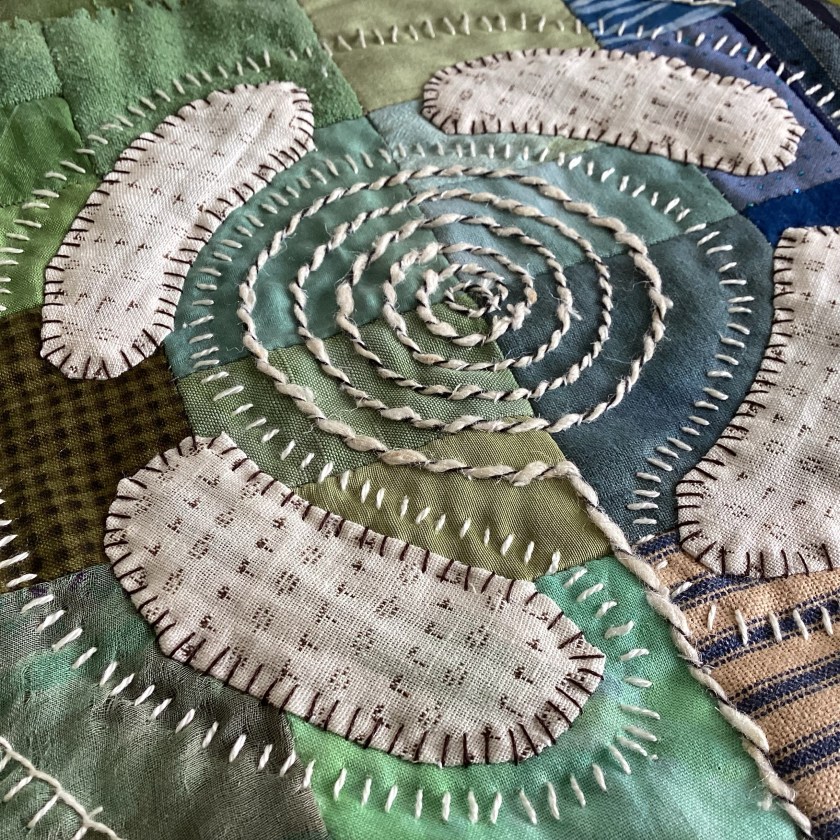I’m feeling settled enough in our new home to think about starting some new work, and I’ve made a start in a spiral bound square sketchbook that I’ve had for a little while. Sometimes these things only speak to you when they’re ready.
Of course I had to make a cover for it, as I do for most of my sketchbooks. I find it helps to illuminate some of the themes, as well as providing a little extra protection for the contents.
The cover wraps around the spiral binding and meets itself on the front. It’s not my usual colour palette:

I’m using a Two Rivers plein air pocket sketchbook, which has alternating pages of watercolour paper and cartridge paper. The pages are about 7.5″ square, so a nice manageable size.

I like pockets in sketchbooks. Actually I like pockets full stop. In my youth I went through a phase of wearing men’s vintage jackets purely because of the number and quantity of pockets, which utterly delighted me. I would keep finding extra hidden pockets all over the garment, inside and out. We no longer say the word pockets in our house. We always say pocketses, a la Gollum in The Lord of the Rings.

I’ve been using the watercolour-paper pages for direct painting, and the cartridge-paper pages for collaging.
So far it’s all very loose and sketchy, blending colours, shapes and words. I’m cutting the words from an old poetry anthology to create found poems, which is helping to navigate the direction.

I don’t know exactly what it’s going to be yet, or where it might be going, but between us (me and the work) we will find a path. Or maybe this is enough. I think it’s leading somewhere, as most things do.

Some of it is already looking like textile work.

This page is just ink on wet paper with salt sprinkled over it. I enjoy the unpredictability of this kind of work. Play, really.

It’s a voyage of discovery as always, exactly like life. Travelling through time, we never know what will happen next. And yet, on we go.

















































